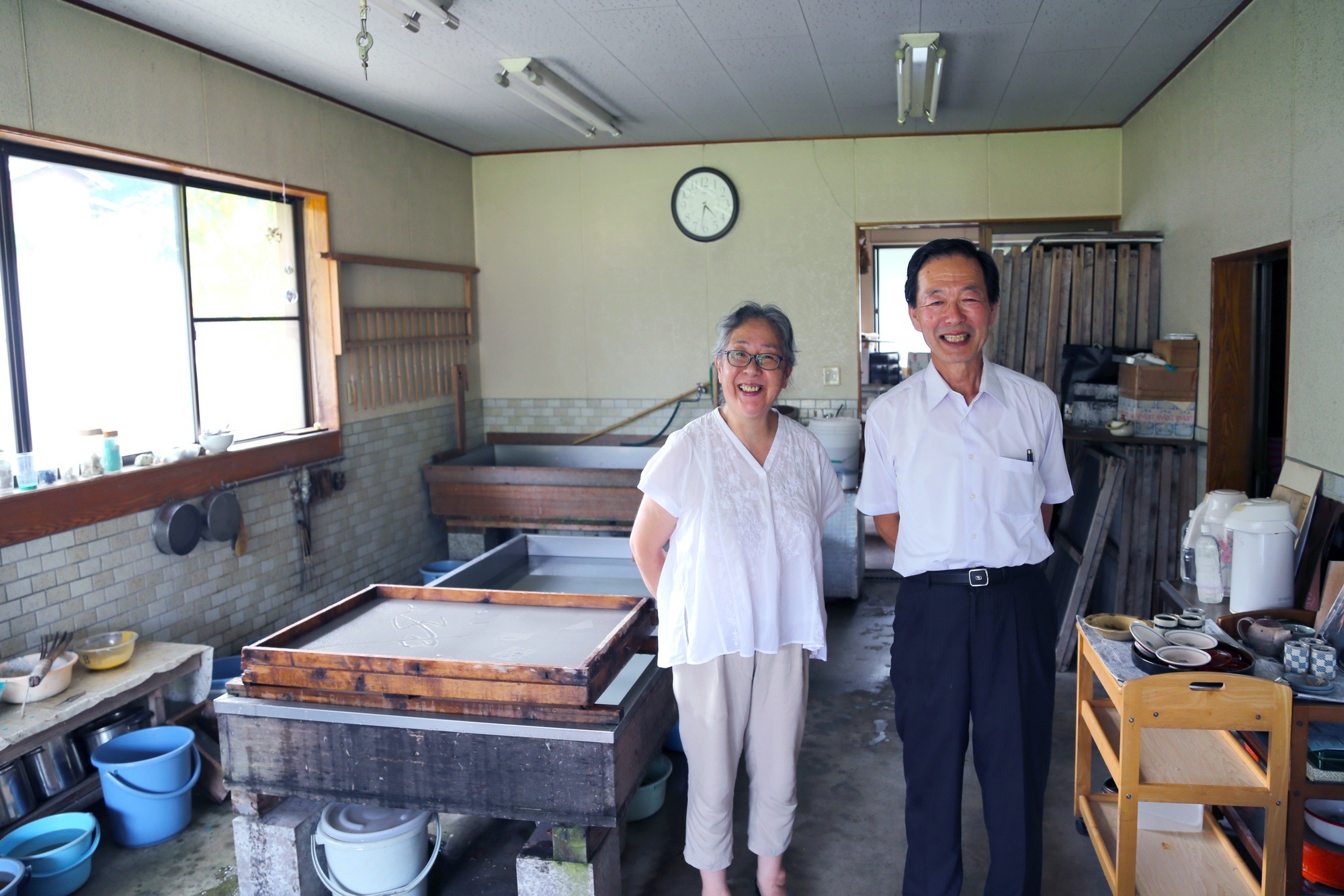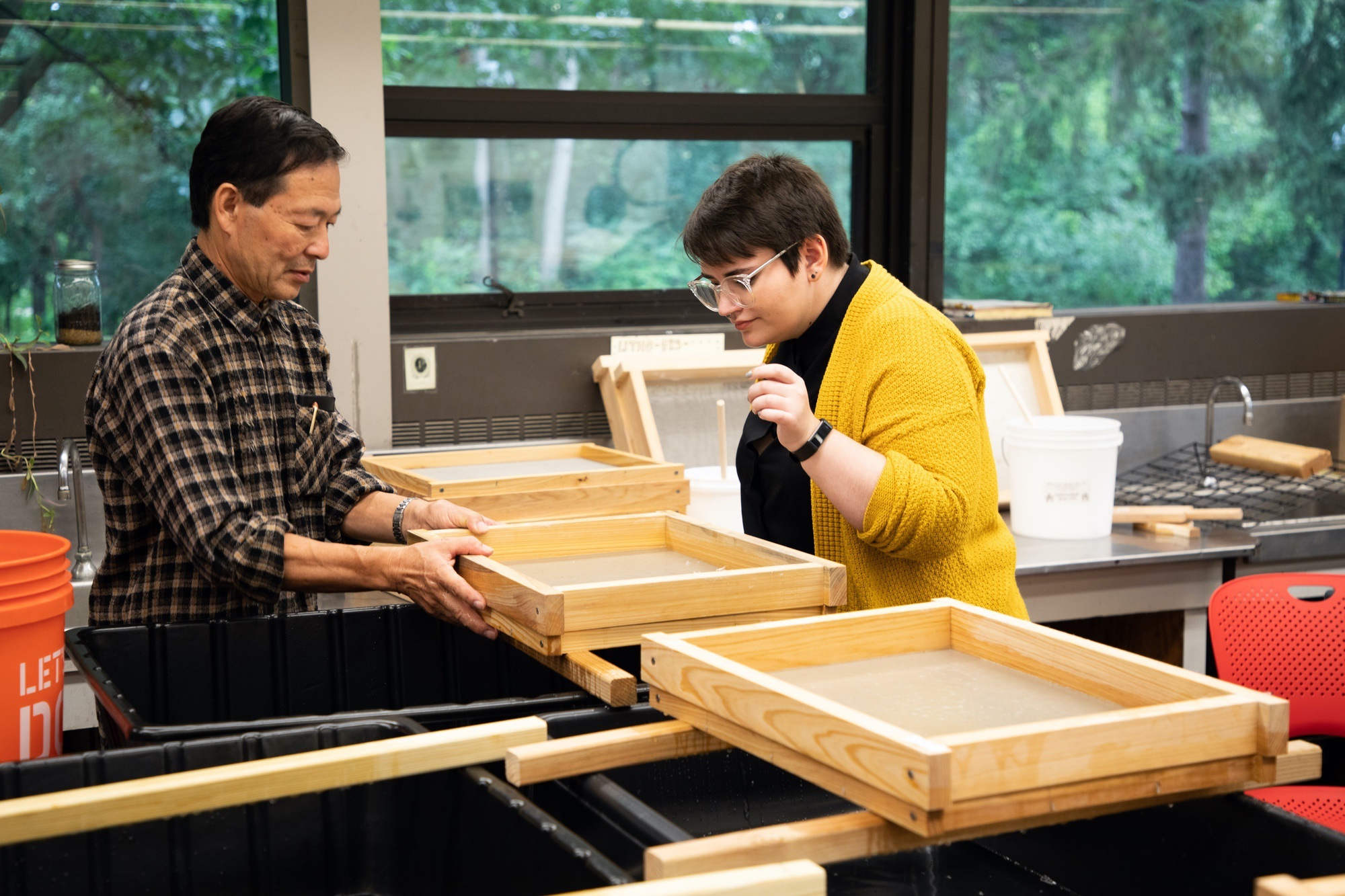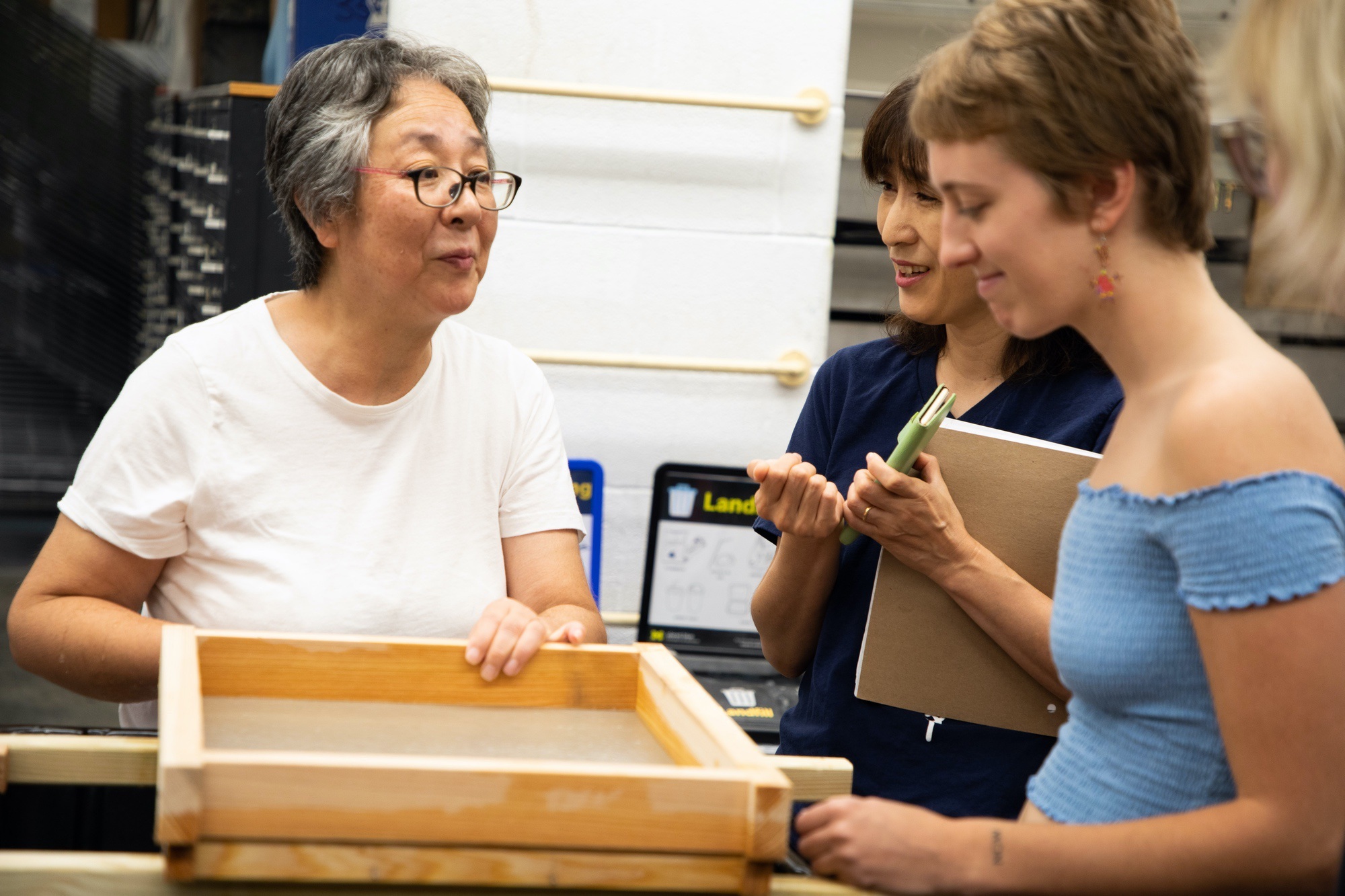Mindfulness from Scratch: Washi-making with Master Papermakers Tomomi and Hisashi Kano
From September 20-October 23, 2019, the Stamps School of Art & Design hosted master artists, master papermakers, and senseis Tomomi and Hisashi Kano. Organized by Professor Endi Poskovic and 2D Media Studio Coordinator Nicholas Dowgwillo, the Kanos worked directly with students in Poskovic’s Japanese Papermaking and Water Printing class (ARTDES 300) to explore traditional and experimental production of washi (Japanese paper).
Under the guidance of the Kano’s, Stamps students began the class with plant fibers and, over the course of weeks, created slips of elegant yet incredibly durable washi for printing, collage, book-binding, woodcut prints (Moku-hanga), and more.
Since 2000, the Kano’s have brought their expertise into the world through regular workshops, exhibitions, and residencies. Poskovic first met the Kanos in 2018 through the Mokuhanga Innovation Laboratory, an artist-in-residence program in Fujikawaguchiko, Japan.
Based in rural Obara in the Aichi Prefecture of Japan, Tomomi Kano and Hisashi Kano are partners in life and papermaking. Mrs. Tomomi Kano owns and operates her family’s 500-year old paper-making business, carrying the tradition into the 21st century through her own mastery. Using his skills as a ceramicist, Mr. Hisashi Kano has found new ways to incorporate clay into the process to achieve a unique pigmentation effects and change the opacity of the paper. Together, the couple works with local farmers to ensure the quality of their products from the very start, using organic gampi, mitsumata, and kozo plants as the starting place for their work. Their approach honors their traditions, their community, and the environment in ways that are instructive and powerful.

According to Sophia Schwartz (BFA ‘21), the Kanos were incredibly generous in sharing their knowledge with the Stamps community. “The most important lesson I learned from them is that experimentation is a necessary process and through it, everything is possible.”

“We hope to have another chance to continue teaching and learning together with the students,” Mrs. Tomomi Kano said. “After we go back to Japan, the students will keep making paper. And from that paper, they’ll be inspired to create other works — and prepared to make objects from the paper.”
In addition to building skills for creative output and experimentation, Poskovic sees the process-intensive, hands-on focus required of washi-making as an exercise in mindfulness.

“When you are making washi, you have no choice but to slow down, be in the moment, and focus intensely on creation,” Poskovic says. “Our attention is often torn in the 21st century — it is incredible to see what happens when you open yourself up to the moment at hand. New ideas and connections require an open mind and clarity of thought.”
Mr. Hisashi Kano concurs: “Even though this is a hectic world, we hope to share this peaceful time in making together, creating something great, something hopeful.”

This artist residency was made possible through the support provided by the Witt Visitors Program, Stamps School of Art and Design; the U-M Center for Japanese Studies; the U-M Center for Research on Learning and Teaching; the U-M Office of Provost DEI Innovation Prize; Arts Engine; the University of Michigan Museum of Art (UMMA); the Japanese Business Society of Detroit; and the City of Toyota Cultural Council, Japan.